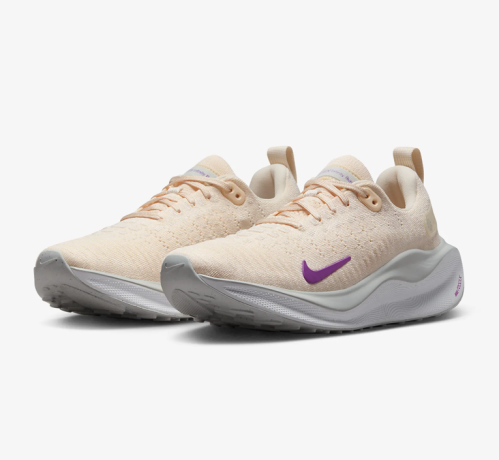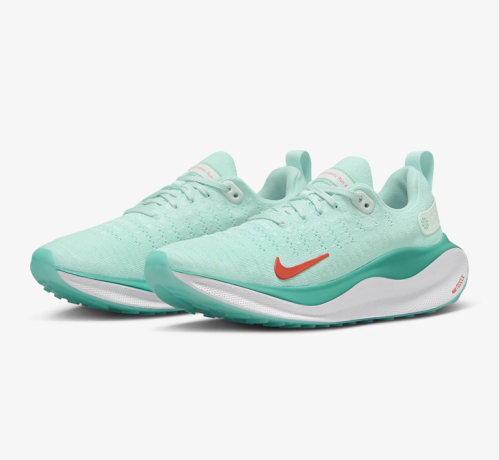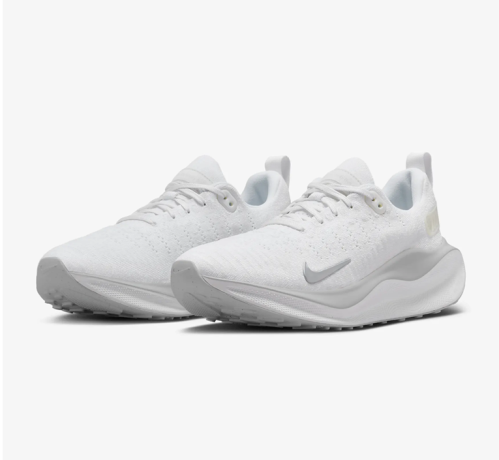Unlike many other forms of working out, running is a pretty low-lift endeavor (no pun intended). There’s no heavy equipment, crowded gym, or wracking your brain for exercises. All you have to do is put on sneakers, move your legs, and voila—you’re exercising. But, if you’ve ever personally hit the pavement, you know that running isn’t exactly easy.
From the playlist that keeps you going, to your hype-squad running buddies, to the springy running shoes that power each step, there’s more that goes into a successful and enjoyable run than meets the eye.
To find out exactly what to add to your run-support checklist, we polled three runners to find out what types of support they can’t run without. The one thing they all had in common? Counting comfortable shoes as a must. That’s why they love the new Nike InfinityRN 4, which feel like a literal hug for your feet thanks to cushiony ReactX foam, stretchy Flyknit, and a wider midsole for a tucked-in feeling that lasts for miles.
Keep reading to learn more about the three types of support that power their daily running practices, and take notes on which ones might help motivate your own miles.
Shop Running Shoes

Nike InfinityRN 4 $160

Nike InfinityRN 4 $160

Nike InfinityRN 4 $160
1. Supportive shoes
From shin splints to runners’ knees, running injuries are absolutely no fun. One of the easiest ways to help keep your body safe and your form strong is to ensure you have shoes made to support your stride.
“Having the right shoe changes everything about the way you run,” says Carla Anguiano, who is the director of an organization that inspires and equips underserved secondary students to experience the accomplishment of running the Los Angeles marathon. “It helps prevent injuries, it helps your form, and most importantly, if your feet feel good then you can add more miles to your run. It also motivates you because who doesn’t like showing off their new running gear?”
The Nike InfinityRN 4 checks all the right boxes with supportive cushioning designed to allow for a smooth journey. Plus, they’re made with a lower carbon footprint, so they’re good for your feet and for the planet. Shoes technically aren’t one-size-fits-all, but these ones fit the bill for every run and every type of runner.
2. Supportive training
To fully fuel your running practice, your body needs proper support—which includes not only what you eat, but also how much time you dedicate to training, recovery, and sleep.
“Nourishing your body properly is essential,” says Megan Ono, a social impact professional and run captain for a community run club in Orange County, California. “Staying hydrated, eating right, and doing the proper training—strength and cross-training included—will help keep your body sustained through runs. And an underrated key is sleep.”
Next time you head out for a run, carve out the time to add five minutes of stretching before and after. It’ll help keep your muscles from feeling too tight (so the next time you roll out isn’t quite so excruciating), which in turn can help prevent injuries.
3. Supportive community
If you’ve ever been on a solo run and subconsciously sped up when you saw another runner gaining on you, you’re not alone. One of the best motivators for movement can be seeing other people around you doing the same thing.
“The running community keeps you accountable and reminds you time and time again that you have people who will not let you doubt or give up on yourself,” says Alejandra Castillo, who runs with with a non-profit organization that uses running to promote community, art discovery, and healthy living. “Runners in running organizations have their own journeys, but they are constantly inspired by the hard work of others, and they always—and 100 percent should always—want to see every member win in their own running journeys.”
In the market for IRL running buddies? Do some research on your local running groups to find the right support squad for you. Is solitary running your preference, but you still want to tap into the power of community? Try joining a running-focused Facebook group or downloading the Nike Run Club app to connect with other runners. And next time you lace up, remember to be extra thankful for the support that’s gotten you this far in your running practice—from your shoes to your squad to your favorite pump-up song.
Sign Up for Our Daily Newsletter
Get all the latest in wellness, trends, food, fitness, beauty, and more delivered right to your inbox.
Got it, you've been added to our email list.





